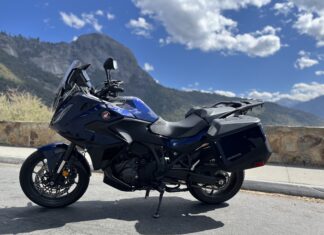
- The 2020 Land Rover Defender configurator is live right now.
- Prices for the Defender 110 start from $49,900.
- The Defender 90 is not currently available in the configurator.
- The Defender 110 X is the most expensive version, starting at $80,900.
We’ve waited for years, and Land Rover has finally indulged our feverish demands with a brand new Defender. Weirdly, despite the fact the company just revealed the new model in Frankfurt earlier this week, the online configurator is already live. We were expecting a bit of a wait to have full pricing details on all the available models, packages and options, but you can actually build your very own 2020 Land Rover Defender here and now.
So, what are we waiting for? I’d like to get an idea of how much my dream Defender would cost. Let us know how you’d spec your Defender in the comments below!
Quick note: Accessory prices were accurate as of September 11, 2019. Land Rover may change prices on their configurator, and dealers may sell accessories at varying prices depending on availability.

Models
Right now, only the four-door Defender 110 is available in the online configurator. There are three models to choose from: The standard Defender 110, the one-model-year First Edition, or the top-end Defender 110 X. Each gets more expensive as you head up the features list, with the top-end X trim topping out around $95,000 — and that’s before you get to accessories.
And yet, you still have to pay $300 extra for features like satellite radio. Seriously, Land Rover? They’re by no means the only automaker that charges you extra for satellite radio, but if I’m spending nearly $100,000 on a car, I’d like to have that thrown in. Make it an at-cost option on the base model sure, but why can’t you throw it in here?
If you want to tow with your Defender, and it does tow a respectable 8,200 pounds, you’ll need the $895 Towing Pack ($1,630 on the base Defender 110). Things like a heated windshield, heated washer jets, and a heated steering wheel come as part of the $700 Cold Climate Pack on all models.
While the 2020 Land Rover Defender 110 X offers things like an available automatic locking rear differential and the Terrain Response 2 system, and All Terrain Progress Control, it’s way too expensive for my blood.

How I’d spec my Defender
The base Defender 110 is where most people will likely start, including me. That $49,900 price tag is not too tough to swallow, but there are a few caveats to consider. If that is too expensive for your blood, the two-door Defender 90 should be along shortly, and should carry a smaller price tag.
First, that price is for the P300 model with a 2.0-liter turbocharged four-cylinder engine. It puts out 296 horsepower and 295 lb-ft of torque. It can get the Defender from 0-60 in 7.7 seconds, according to Land Rover, and can hurl the Defender up to an 119 mph top speed. The P400 is a much more attractive option for power, offering up 395 horsepower and 406 lb-ft of torque. But here’s the rub: The more powerful version starts at $62,250. In other words, just going for the upgraded engine will set you back $12,350 over the P300 model.
On that basis, I would go for the standard Defender 110 P300. It offers enough power to get around in every day traffic and it will probably offer better fuel economy than the inline-six (official economy figures aren’t out yet, so I could be wrong). The Defender is not a speed machine even with the more powerful engine, though I concede the extra torque may help off-road.

Going for the cheapest option
Among the base Defender P300 models, I’d go for the standard Defender 110. The S trim offers few upgrades on the surface from the base model, and nothing I couldn’t live without. I feel the 18-inch steel wheels actually fit the spirit of the old Defender more than going with huge, glossy alloys.
The “Packs”
No matter which Defender you get, you have the option of four accessory packs. There’s the most expensive Explorer Pack, followed by the Adventure Pack, Country Pack and Urban Pack. Each offers a different set of equipment depending on how extreme you want to go on the overlanding – city slicker spectrum. The pack prices decrease from the Explorer Pack and add fewer accessories along the way. Here’s what the packs cost on the base Defender, along with some corresponding photos shown above.
- Explorer Pack (Fuji White): $4,286.55
- Adds: Front & rear “classic” mudflaps; matte black hood decal; spare wheel cover; wheel arch protection; raised rear intake; Expedition roof rack; side-mounted gear carrier
- Adventure Pack (Tasman Blue): $2,844.08
- Adds: Front & rear mudflaps, spare wheel cover, bright rear scuff plate; portable rinse system; integrated air compressor; side-mounted gear carrier; seat backpack (fitted to second row seat)
- Country Pack (Pangea Green): $1,899.73
- Adds: Front & rear “classic” mudflaps; full-height cargo partition; portable rinse system; bright rear scuff plate; wheel arch protection
- Urban Pack (Santorini Black): $637.07
- Adds: Bright rear scuff plate, spare wheel cover, bright metal pedals
Mind you, since these are accessory packs, you can go the à la carte route and just pick the options you really want.
Personal choices
The Explorer Pack definitely looks the coolest, but it also adds more than $4,000 to the price. Personally, I’d choose the Adventure Pack, since it adds an integrated air compressor and a portable rinsing system, as well as the gear carrier. That adds just over $2,800 to the base price, which is an easier pill to swallow.
Fuji White is the only no-cost color, at least on the base Defender 110. Any other color costs an additional $710. I’m going with Pangea Green, since it’s one of the more traditional looking colors for the Defender. If you’re not keen on the chrome (which I’m not), a $600 Black Exterior Pack gives you a matte black look instead.
Again, steel 18-inch wheels come standard on the base 110, but you can get a wide array of wheels at extra cost. I’m skipping that option (I can always fit fancier wheels later, if I want). All-season tires come standard, but Land Rover does offer off-road tires for $350 more. It looks like they are Goodyear Wrangler tires from what we’ve seen so far, so I will spring for those. However, it’s worth noting they are part of a $1,345 Off-Road Pack as well. Finally, you can choose a black or white contrast roof as an $870 option. It looks cool, but I’m sticking with the body-colored roof to keep the price down.
Seating and trim
The 2020 Land Rover Defender 110 does come with three seating options. A standard two-row, five-passenger setup is standard. A six-seat option with the front jump seat costs $900 more. A three-row configuration (2-3-2) costs $1,200 more. I don’t have kids and I’d prefer the center console up front, so I’m sticking with the five-seat setup for my Defender.
You can have Natural Smoked Dark Oak or Rough-cut Walnut interior trim for $600 extra, if you want. I don’t mind the somewhat industrial look of the standard trim, so I’ll skip that option. Even in the base Defender, you get a leather-wrapped steering wheel, so you don’t have to worry about an extra cost there.

Even more packs!
After picking your accessory packs, paint color, wheels and interior trim, you get to a frankly bewildering range of option packs. This is where you can customize your base Defender to have some options from the higher trim levels without paying through the nose. I won’t list them all here, but you can see more about it on the configurator page.
Of all the options here, I’d spring for the $1,345 Off-Road pack, which adds a domestic plug socket, an electronic active differential with brake-based torque vectoring, and off-road tires. I’d also spent $650 on the tow hitch receiver as well as $500 on the “Intrusion sensor”, which adds some degree of protection against my Defender getting stolen.
Finally, there are all the accessories, of which there is a ton. I wouldn’t go for any of that, since you can usually get similar aftermarket accessories much cheaper.
My Defender
The 2020 Land Rover Defender 110 I ended up with is fairly basic, but it also doesn’t cost over $90,000. Including destination, my specced out Defender came in at $57,574.08, which isn’t too far off the starting price.
- Base MSRP: $49,900.00
- Options:
- Adventure Pack: $2,844.08
- Pangea Green paint: $710.00
- Black Exterior pack: $600.00
- Off-Road pack: $1,345.00
- Tow hitch receiver: $650.00
- Intrusion sensor: $500.00
- Destination charge: $1,025.00
- Final price: $57,574.08
See more about the 2020 Land Rover Defender below, and let us know how you’d spec your Defender in the comments!






































































